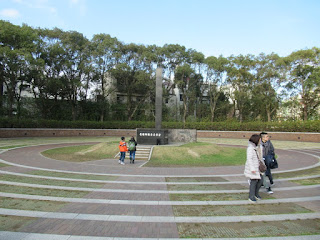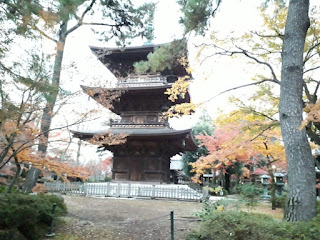It
is not possible to talk about the history of Christianity in Japan without referring
to the stories in Nagasaki Prefecture.
Many
people in the area accepted Christianity in the 16th century; Nagasaki
became a center of Christianity in Japan.
Then,
the period of repression came. The Edo shogunate government banned the
religion in the middle of the 17th century. Foreign priests were
forced to leave the country and Japanese Christians were compelled to abandon
their believes.
Some
people did not follow the order and kept their believes secretly.
The
existence of the hidden Christians was found when the European and American
priests returned to Japan in the Meiji era, about 250 years after the religious
ban.
There
were many underground Christians in Urakami district in the Edo era. The place was later destroyed
by the atomic bomb in 1945. (Visit “Memoriesof atomic bomb disasters in Nagasaki”)
Reconstructed
Urakami Cathderal is now a center of religious activities.
Oura
Church locates in the southern part of Nagasaki City. It was first built in 1865 by
French priests. The discovery of the hidden Christians took place here. (See also the 2nd photo from the top)
Many
hidden Christians lived in small villages in the mountainous areas in the Edo
period. Priests were sent to these villages in the Meiji era. These areas
included Shitsu, Ono and Kurosaki.
They locate in the coastal area about 15 km from central Nagasaki City. The left photo is a scene of Shitsu settlement.
They locate in the coastal area about 15 km from central Nagasaki City. The left photo is a scene of Shitsu settlement.
He
also opened social-welfare facilities to improve people’s lives in the village.
The 3rd photo from the top shows the scene of the sea from Ono.
The
settlements of Shitsu and Ono are registered as the World Heritage sites.
Japanese novelist Endo Shusaku wrote a story titled “the Silence,” which focused on the repression on Christianity and hidden Christians. The monument is places in Shitsu.
Hidden
Christians made prays using various camouflage
measures. This Karematsu shrine in Kurosaki is used to make gatherings of the
Christians.
Total
26 Christians were executed by crucifixion in 1597 in Nishizaka district in the
central Nagasaki City. They are called the 26 Martyrs of Japan. A memorial and a museum were built in 1962.
Pope
Francisco visited Nagasaki on Nov. 24, 2019. He visited several places
including Urakami Cathedral, Oura Church and the Twenty-Six Martyrs Museum.
Former Pope John Paul II as well as Saint Teresa of Calcutta also visited the
museum.






















































